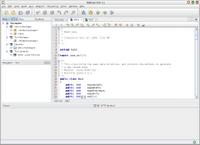This post I'm going to be talking about a fabulous application that's included with newer versions of
KDE called
Kontact. This is an all in one Personal Information Manager. It has basically combined the functionality of several related programs into one, such as KMail, KAdressBook, KOrganizer, KNode, sticky notes, there's even an rss feed agregator. I'll lay out all the diferent pieces and provide screenshots.
Here is the main screen when you start up Kontact.
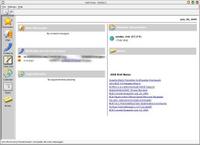
As you can see this is a summary page. (Notice the RSS feeds on the bottom right)
It alerts you to new email messages, even the current weather, birthdays, and upcoming appointments you might have in the calendar. Also along the left edge are quick buttons to get to the different components of Kontact.
So let's check out the other quick buttons and their screens.
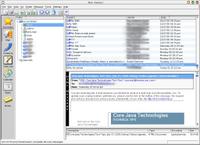
This is just the standard Kmail interface. KMail is my preferred mail client. I tried thunderbird which looks really sharp, but I found myself going back to this.
The next button is the Contacts list.
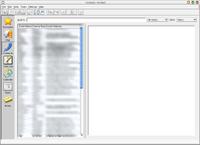
Note that you have the ability to filter your contacts by category. This feature is very handy if you set up your contacts properly. It helps me maintain my personal contacts separate from my business contacts.
Next is the To Do List.
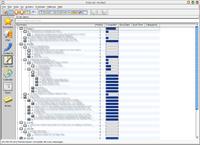
This feature has some nice options you'll notice you can create a hierarchy of sub-todos. This is great for starting with a rough list of what needs doing, and then break it down. When figuring out timelines for projects I have found this feature indispensable. I haven't even started getting into the due by, and categories yet.
Next is the Calendar.
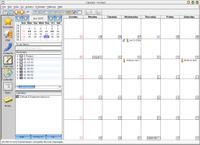
This feature is totally awesome. It contains several different views, you can view by day, week, or month. It visually displays any upcoming appointments, events, or meetings. As you can see I've listed an upcoming birthday, a scheduled phone call, and a yard sale my kids want to put on. I haven't used this feature to it's full extent as of yet, but I have noticed I can do things with it, that I wasn't able to do with Outlook. This suprised me actually. It will work with an IMAP server as well so it's quite powerful.
Next is the News button.

As you can see I don't have this feature configured. I use a different usenet reader when I need it. Which to be quite blunt is not all that often. Still it's a nice feature, that they add it in. News, and email kind of go together.
Lastly is the sticknotes.
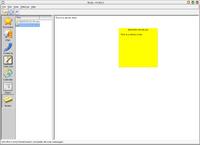
Being a Mac fan, I love this feature, even if it is a little wonky. ;-)
Kontact can also be integrated with certain server side groupware programs. One notable is the open source
eGroupware. Which is great for sharing contacts, calendars, tasks, etc. All in all an indispensible tool, and one that definitely freed me from my daily usage of windows. The only feature from Outlook that I miss, but is not necessary is the read receipt option when you send an email. I always like knowing if someone's read my emails at least. ;-)
Next time I'll talk about an amazing application that we used (mostly my boss ;-) ) to create our promotional videos. Once again open source and free, it's called Cinelerra and is used for video editing, you might think of it as the Premiere for Linux. Some would scoff at that statement, but considering what we were able to do with it I would say it's fairly capable considering it's a work in progress.
Until next time...
-NT
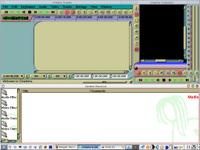 This is something we really didn't expect to find. My boss even made a green screen to film himself on. If you go to the main site and select the hi-speed option, you'll see the video in flash at the top of the page. We were able to add all kinds of compositing and effects into the video. All in all it turned out looking very professional, and we didn't need windows to do it.
This is something we really didn't expect to find. My boss even made a green screen to film himself on. If you go to the main site and select the hi-speed option, you'll see the video in flash at the top of the page. We were able to add all kinds of compositing and effects into the video. All in all it turned out looking very professional, and we didn't need windows to do it.






